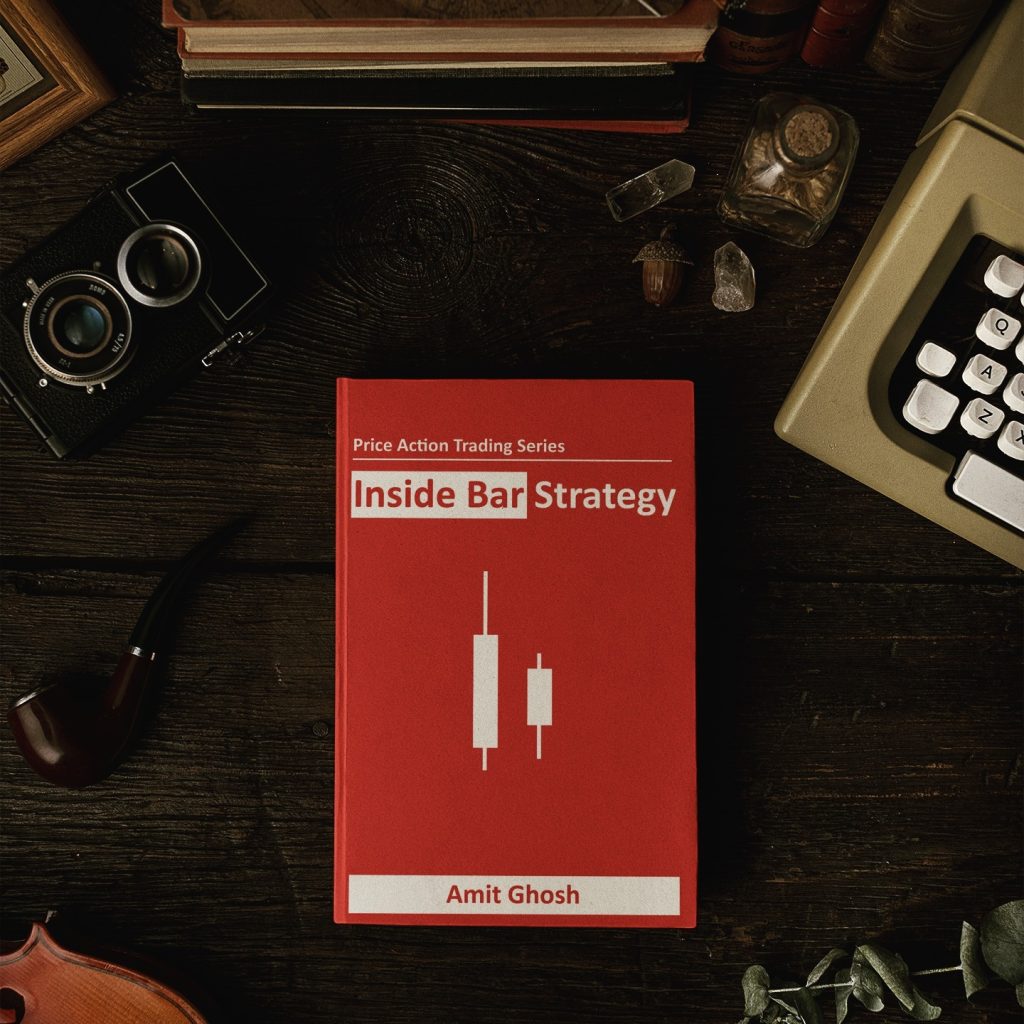What is Buddha?
Buddha is a trading system that uses Inside Bar strategy at its core.
- In Buddha, we primarily focus on identifying trading opportunities within the F&O (Futures and Options) market.
- We deploy two type of exit strategy in same trading model. One is intraday. Another is Positional. Both has its own pros and cons.
- It uses time compression trading strategies a central element for watchlist selection of stocks in the Buddha system.
In some advanced models of Buddha, We prioritize the synchronization of specific price patterns across various timeframes. Our approach relies on price action models and the analysis of Open Interest data to pinpoint stocks suitable for short or long positions within the daily timeframe. Like, there are some cases we do not do long trades on some particular stock and vice versa.
![]()
The trading strategy is named “Buddha” because it allows you to execute trades without the need to actively monitor the market. These trades can be conveniently placed using After Market Orders the day before, enabling individuals with busy schedules, such as office goers, to effortlessly reap the benefits of trading.
The Buddha System openly shares live trade entries and exits on the Unofficed Discussion Forum, providing transparency and insights into real-time trading decisions.
The Buddha Scanner
The Buddha System openly shares live trade entries and exits on the Unofficed Discussion Forum, providing transparency and insights into real-time trading decisions.
The watchlist generated by Buddha focuses on stocks that exhibit specific patterns, including:
- Double Inside Bar
- NR7 + Inside Bar
- Triple Inside Bar
- 3% Gap Down or 3% Gap Up
- Index Inside Bars
- Diamond Pattern
Buddha and Entropy Compliment each other!
Similar to other strategies within the Time Compression Theory, the central focus lies on identifying breakouts from the consolidation range. In the case of Entropy, the emphasis is on mean reversion, whereas Buddha centers its strategy around trading breakouts and breakdowns.
Both of these strategies fall under the category of High Yield Trading Strategies (HYTS) and are associated with higher drawdown levels. However, their complementary nature helps maintain a balance across various metrics and provides a smoother drawdown curve.
The Buddha Trading Strategy
Now, Note that – “Triple Inside Bar” and “3% Gap Down or 3% Gap Up” watchlist is not being used in the core strategy but they are used in alternative trading models. So, Once a stock pops up in the watchlist of “Double Inside Bar”, “NR7+Inside Bar” and “Index Inside Bar”, We follow this follow the rules of famous Inside Bar strategy –
- Long if it breaks the high of the previous day with a stop loss at the previous day’s low.
- Short if it breaks the low of the previous day with a stop loss at the previous day’s high.
In case of gap up above the previous day’s high or gap down below the previous day’s low, please avoid buying it or selling it respectively. It means –
- If there’s a gap up above the previous day’s high (the sell point), it implies that the sell trade has already been triggered, so we avoid this scenario.
- Likewise, in the case of a gap down, we steer clear of situations where there’s a gap down below the previous day’s low (the buy point).
This strategy, commonly referred to as the “Inside Bar strategy,” is remarkably straightforward, often paired with other strategies, and extensively covered within the Inside Bar course.
However, it may seem almost unbelievably simple. While it proves effective for Inside Bar and Double Inside Bar scenarios, it tends to yield unfavorable results for the “Triple Inside Bar.”
Also, the strategy does not demonstrate impressive performance when implemented on Narrow Range Bars.
This is why, in the Buddha strategy, we focus on a watchlist comprising stocks that exhibit both “Narrow Range 7 Bars” and single “Inside Bar.” We call it NR7 Inside Bar.

The Buddha Dashboards
In the end of the day, the list of triggers are updated in the Buddha Dashbaords. We deploy two type of exit strategy in same trading model.
Intraday: One is intraday i.e the trade is auto square off at the end of the day.
Alternative Trading Models
Although in Buddha’s core strategy, We employ only Price Action models but the selection of stocks from these patterns can be incorporated into the various trading models to automate different variations of the strategy.
Even after entering a trade, further technical analysis is performed on shorter timeframes to fine-tune trading decisions.
Like, In the original strategy, In case of gap up above the previous day’s high or gap down below the previous day’s low, please avoid buying it or selling it respectively.
But, We can also instead, monitor the price action within the first 5 minutes and implement the Opening Range Breakout (ORB) strategy .
Also. We often use Open Interest data to decide additional weightage of a buy or sell trade.
Any model that focuses on breakout or breakdown mechanism, The watchlist of Buddha will be a gamechanger for it.
Anyways, Apart from Open Interest Theory, You can also explore advanced models like Maxpain Deviation Model that works very well with the Buddha Watchlist .
